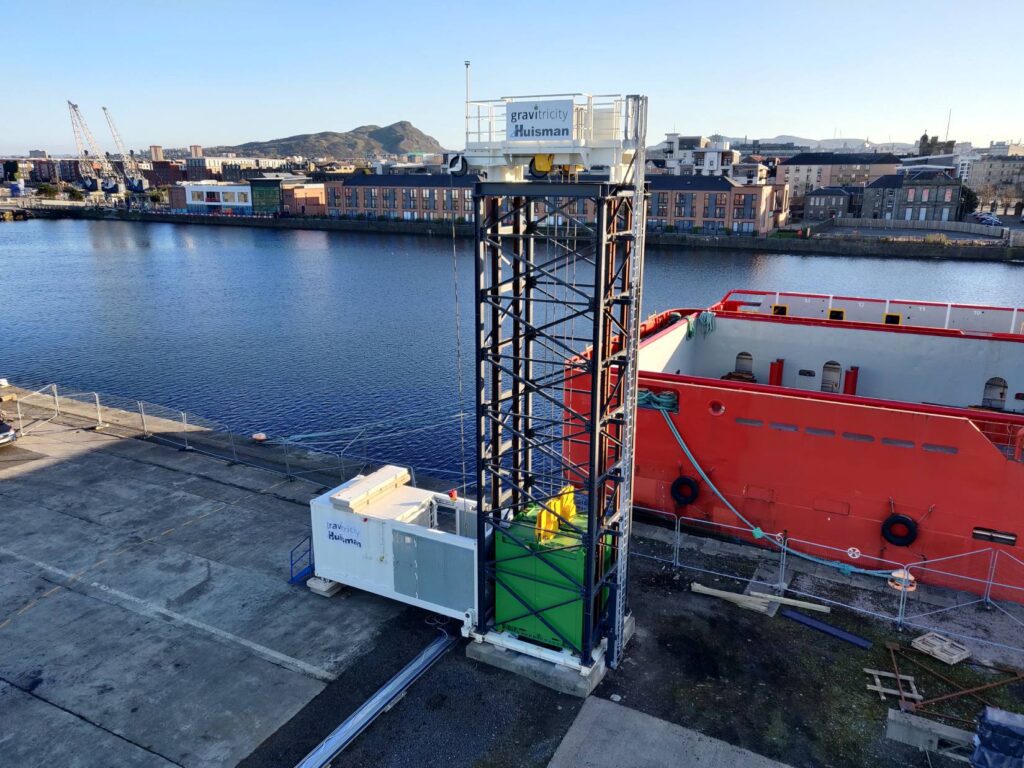With developments in renewable energy continuing to emerge, the biggest challenge is ensuring a plentiful supply of solar or wind power for electricity. What happens when the wind is low, or the sun is hidden behind clouds? Luckily, a viable solution is on the horizon. Gravity batteries are novel energy storage devices that use weights and turbines for a continual power source.
How do they work? It’s a simple but effective design. Wind, solar, or hydroelectricity is stored in a battery, and then the power is used to lift a heavy weight either high into the air or to the top of a deep shaft. When power is needed, winches lower the weight, increasing the rate of electricity output from the movement of cables.
Most academic research on clean energy utilization says storage is the most significant factor holding back renewable energy conversion. With a gravity battery, a utility could store captured solar power during the day when the sun is at its peak. When night rolls around, the stored energy can be released during a higher demand timeslot. The invention is gaining traction across the country and, more impressively, the globe.
In the U.K., a few start-ups are already working on a viable gravity battery power system. One is Gravitricity, based in Edinburgh, Scotland, which tested a system that works similarly to pumped hydroelectricity.
The company suspended a 50-ton iron weight from a 49-foot tall steel tower, gradually lowering it to the ground. Electricity was produced as the metal box made its way down without creating any emissions or harming the environment.
“We proved that we can control the system to extend the lifetime of certain mechanical components, like the lifting cable,” said Jill Macpherson, Gravitricity’s senior test and simulation engineer. “The system is also designed so that individual components can be easily replaced instead of replacing the entire system throughout its lifetime. So, there’s real scope for having a decades-long operational life.”
Results were promising, with Gravitricity posting 250 kilowatts of clean energy, enough to power around 750 homes. While the initial trials were encouraging, the company is still experimenting with the best location for the system. The Port of Edinburgh was the spot for this test, but the company is checking out more reclusive sites.
To that end, abandoned mine shafts have been investigated as a setting for systems. More coal mining operations are shuttering, leaving ample space underground to fit the structures needed for energy generation. Second, many of these mines have geothermal heat radiating from the bottom, so in theory, water could flood the shaft and be warmed by the ambient heat. The batteries could then use the warm liquid as an energy source during the weight drop. In Spain, many old coal mines are being repurposed for geothermal projects, which may support gravity battery installation.
Third, and perhaps most importantly, these projects can help restore former coal-dominated local economies with employment opportunities, something Spanish officials have worried about when closing mines. Other European cities like Aberdeen, Scotland, are also considering these projects as the former oil hub moves into renewable energy ventures.
The technology is also slowly gaining traction in the clean energy discourse in the U.S. Gravity Power out of California is testing the idea of using a battery to pump water to power a turbine.
The turbine would be connected to the grid and cost much less than lithium-ion batteries for storage and pumped hydroelectric power. The firm is looking to install gravity batteries in urban areas, where the electrical grid is the most strained and population density is much greater.
Lithium-ion batteries are currently the technology of choice for large-scale utility storage, but gravity batteries are proving to be a more efficient system. Lithium-ion batteries have a shelf life of a few years, meaning they can only be charged and discharged so many times before losing their effectiveness. There are also questions about material sourcing and supply chain issues. Gravity battery components like winches, cables, and weights can last for decades. Longevity is an essential component of sustainability, and the longer a gravity battery can generate energy consistently, the better the argument for mass adoption of the technology.





